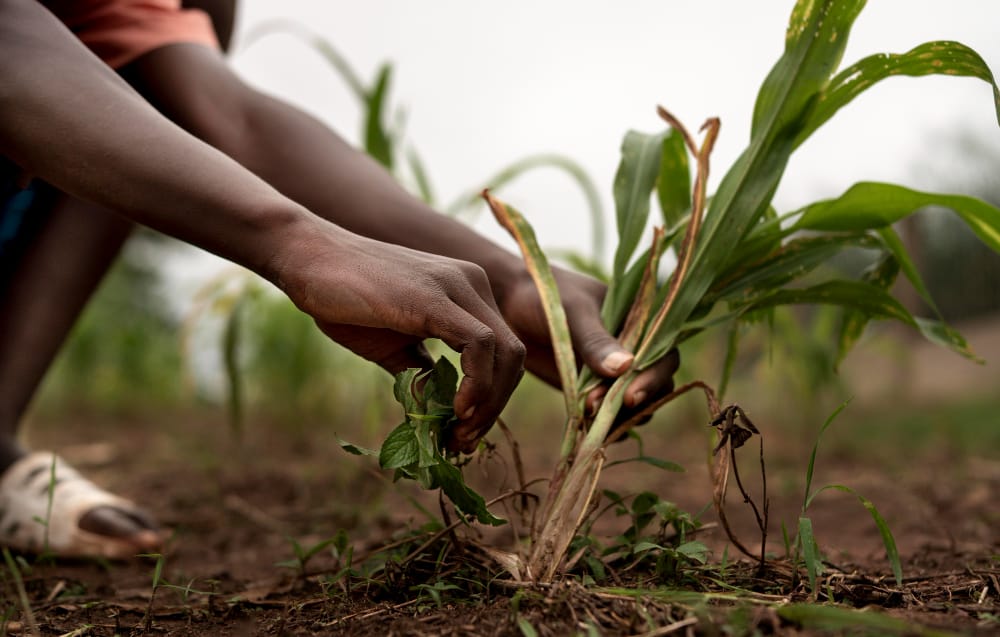As the world marks World Food Day today, hunger is tightening its grip across continents, and Kenya is no exception.
According to the United Nations, more than 673 million people, about eight per cent of the global population, are going hungry, a figure that has been rising steadily over the past decade.
For millions of Kenyans, hunger is not a headline but a daily struggle. In some regions children go to school on empty stomachs. Farmers stare at barren fields, unsure whether to plant again as mothers walk long distances to find food and water for their families.
According to the UN, climate change is one of the main drivers playing a role in creating food insecurity, but there are other reasons including conflict and political instability, economic shocks and inflation, structural poverty and inequality, trade disruptions and markets volatility.
Increasing climate variability, including droughts, floods, and heatwaves, all play havoc with the ability of farmers to grow food. This undermines agricultural productivity and food availability, especially in vulnerable regions.
In Kenya, the numbers mirror this global crisis. The National Drought Management Authority (NDMA) estimates that over 4.3 million Kenyans currently face food insecurity, with arid and semi-arid counties like Turkana, Marsabit, Wajir, Garissa, and Samburu hardest hit.

Nowhere is the link between climate and hunger clearer than in the Horn of Africa. Kenya, like its neighbours, is reeling from increasingly erratic weather patterns that includes punishing droughts followed by flash floods that destroy the very crops meant to feed families.
Between 2020 and 2023, Kenya endured its worst drought in 40 years, with five consecutive failed rainy seasons. Millions of livestock perished, rivers ran dry, and entire communities were forced to rely on food aid. Just as the land began to recover, torrential rains and floods struck in 2024, sweeping away crops and displacing thousands.
“The rains no longer come when they should,” says Jane Ekal, a pastoralist from Turkana. “We plant, but the seeds die in the ground. When the rain finally comes, it floods everything.”
The Kenya Meteorological Department warns that climate variability will only worsen. Rising temperatures, changing rainfall patterns, and recurring El Niño events are predicted to further reduce crop yields, particularly maize, beans, and wheat, which are Kenya’s staple foods.
While climate change is one of the major causes of food insecurity, economic shocks, high food prices, and political instability are also feeding hunger.
The Food and Agriculture Organization (FAO) notes that inflation, driven by global supply chain disruptions and local production challenges, has pushed food prices beyond the reach of many households. In Kenya, the cost of basic foods has risen by over 30% since 2022, according to the Kenya National Bureau of Statistics (KNBS).

Rural farmers, who make up 70% of Kenya’s labour force, face rising input costs even as their yields decline. Urban poor families, meanwhile, are spending up to 60% of their income on food, forcing them to skip meals or turn to cheaper, less nutritious options.
Across Africa, food insecurity is reaching alarming levels. The World Food Programme (WFP) warns that more than 135 million people across the continent face acute food shortages.
Countries like Somalia, Sudan, South Sudan, Ethiopia, Mali, Burkina Faso, and the DRC are enduring the twin crises of conflict and climate disaster. Somalia, for example, is struggling with its worst drought in four decades, while civil strife in Sudan has displaced millions, cutting off farms and food supply chains.
The Horn of Africa is also battling desertification, where once-fertile land is turning to dust. Kenya’s north and eastern regions are losing thousands of hectares of productive land each year, threatening the country’s food security and economic stability.
Despite these grim realities, Kenya has opportunities to turn the tide. The government launched programmes such as the Climate Smart Agriculture Strategy (2017–2026) and the National Irrigation Expansion Plan to boost resilience. Investments in irrigation, water harvesting, early warning systems, and drought-tolerant crops are starting to pay off in some regions.
Counties like Makueni and Kitui have pioneered the use of sand dams and micro-irrigation to sustain smallholder farmers. In West Pokot, community groups are reviving traditional drought-resistant crops like sorghum and millet, while the Kenya Agricultural and Livestock Research Organization (KALRO) is developing new seed varieties that can withstand heat and pests.
At the international level, partnerships with the African Development Bank, FAO, and World Bank are channeling funds into food systems transformation, from reducing post-harvest losses to promoting green energy in agriculture.




